3 Min Read

aerocaminua/iStock/GettyImages
Weekly export inspections for the week ending October 25 had some bullish news for soybeans, but corn volume last week was less than impressive, while wheat totals firmed slightly from the week prior.
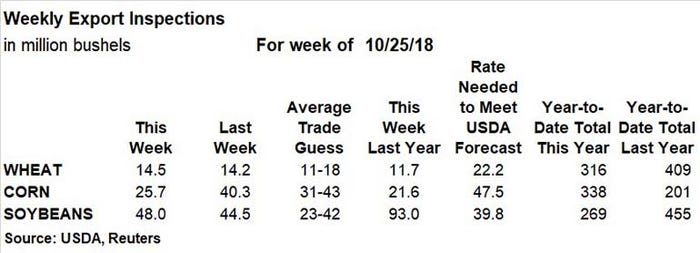
Corn export inspections reached 25.7 million bushels last week, falling well below the prior week’s total of 40.3 million bushels and landing beneath trade expectations that ranged between 31 million and 43 million bushels. The weekly rate needed to match USDA forecasts moved higher, to 47.5 million bushels, although year-to-date totals of 338 million bushels are still up 68% year-over-year so far in 2018/19.
Mexico was the No. 1 destination for U.S. corn export inspections last week, with 8.4 million bushels. Other top destinations included Japan (5.2 million), Peru (3.4 million), South Korea (2.0 million) and Colombia (1.4 million).
Soybean export inspections rose to 48.0 million bushels last week, slightly ahead of the prior week’s total of 44.5 million bushels and above trade expectations that ranged between 23 million and 42 million bushels. The weekly rate needed to keep pace with USDA forecasts eased slightly, to 39.8 million bushels, and cumulative totals for the 2018/19 marketing year remain more than 40% below 2017/18 so far.
Argentina was the No. 1 destination for U.S. soybean export inspections last week, with 6.5 million bushels. Other top destinations included Mexico (6.3 million), Bangladesh (4.2 million), Spain (2.6 million), Portugal (2.6 million) and the Netherlands (2.6 million). China also made an appearance last week, with 2.5 million bushels – thanks to the ironically named ship Audacity shipping out from the PNW last week. However, the destination of that vessel was changed to Vietnam over the weekend according to ship tracking services.
“U.S. costs remain at a 25% discount to Brazil, so it makes sense for deals on the books to be executed,” says Farm Futures senior grain market analyst Bryce Knorr. “But that was only the fourth vessel bound for China since the start of the 2018 marketing year. Year-to-date inspections for China total just 10 million bushels, compared to 315 million a year ago.”
Instead of domination from a single customer, U.S. soybeans headed to 26 different countries last week, Knorr notes. The leading destination of Argentina is buying U.S. soybeans to keep its key processing industry going until new crop soybeans hit the market in 2019, he says.
“Total soybean shipments last week were a strong 48 million bushels, which helped boost basis in the export pipeline,” Knorr says. “But the U.S. needs to move 40 million bushels a week through the end of the marketing year in order to reach USDA’s forecast for the 2018 crop. That’s a tall order, especially if China follows through on plans to cut total soybean imports by around 10% this year.”
Wheat export inspections reached 14.5 million bushels last week, up slightly from 14.2 million the prior week and in the middle of trade estimates that ranged between 11 million and 18 million bushels. The weekly rate needed to match USDA forecasts still moved higher, to 22.2 million bushels, and marketing year-to-date totals for 2018/19 of 316 million bushels are tracking almost 23% lower than 2017/18.
Japan was the No. 1 destination for U.S. wheat export inspections last week, with 3.8 million bushels. Other top destinations included South Korea (1.9 million), Guatemala (1.9 million), Mexico (1.7 million) and the Philippines (1.6 million).
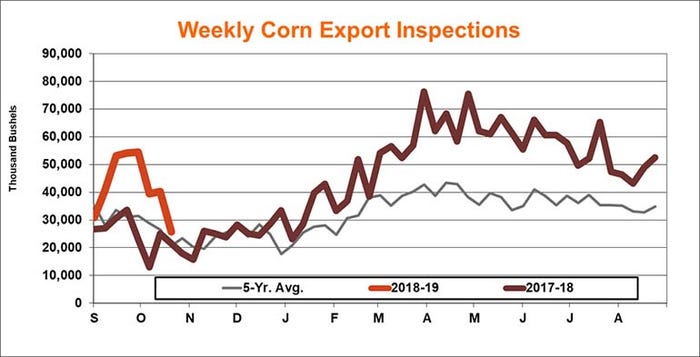
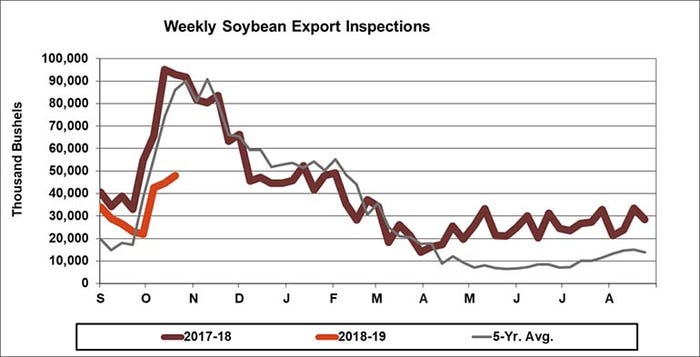
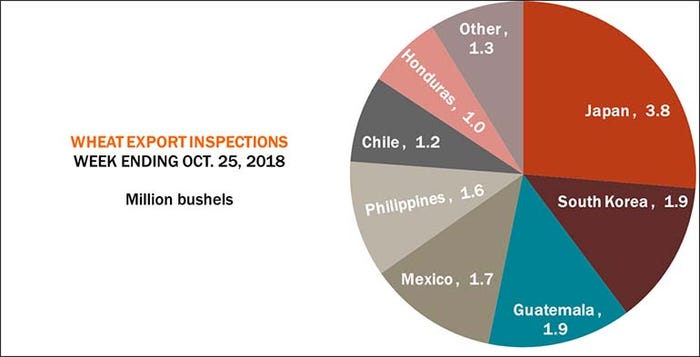

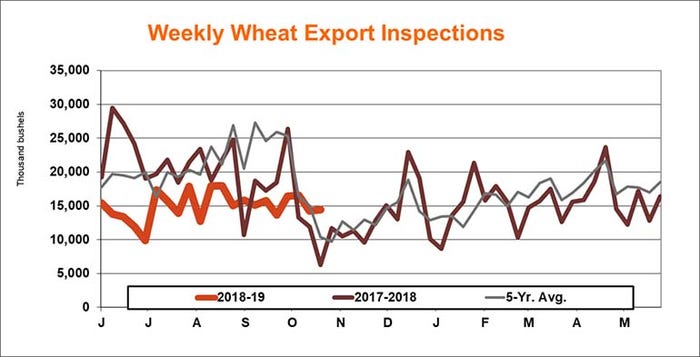
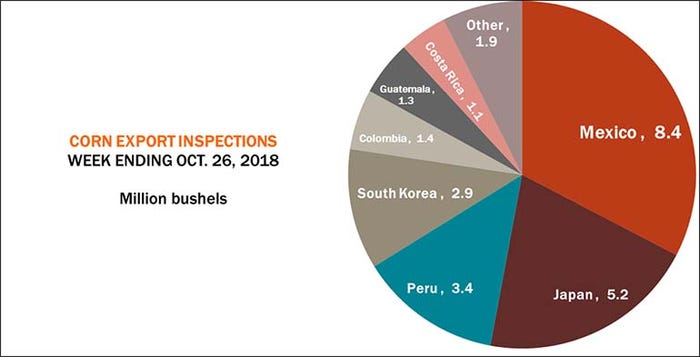
About the Author(s)
Subscribe to receive top agriculture news
Be informed daily with these free e-newsletters
You May Also Like






